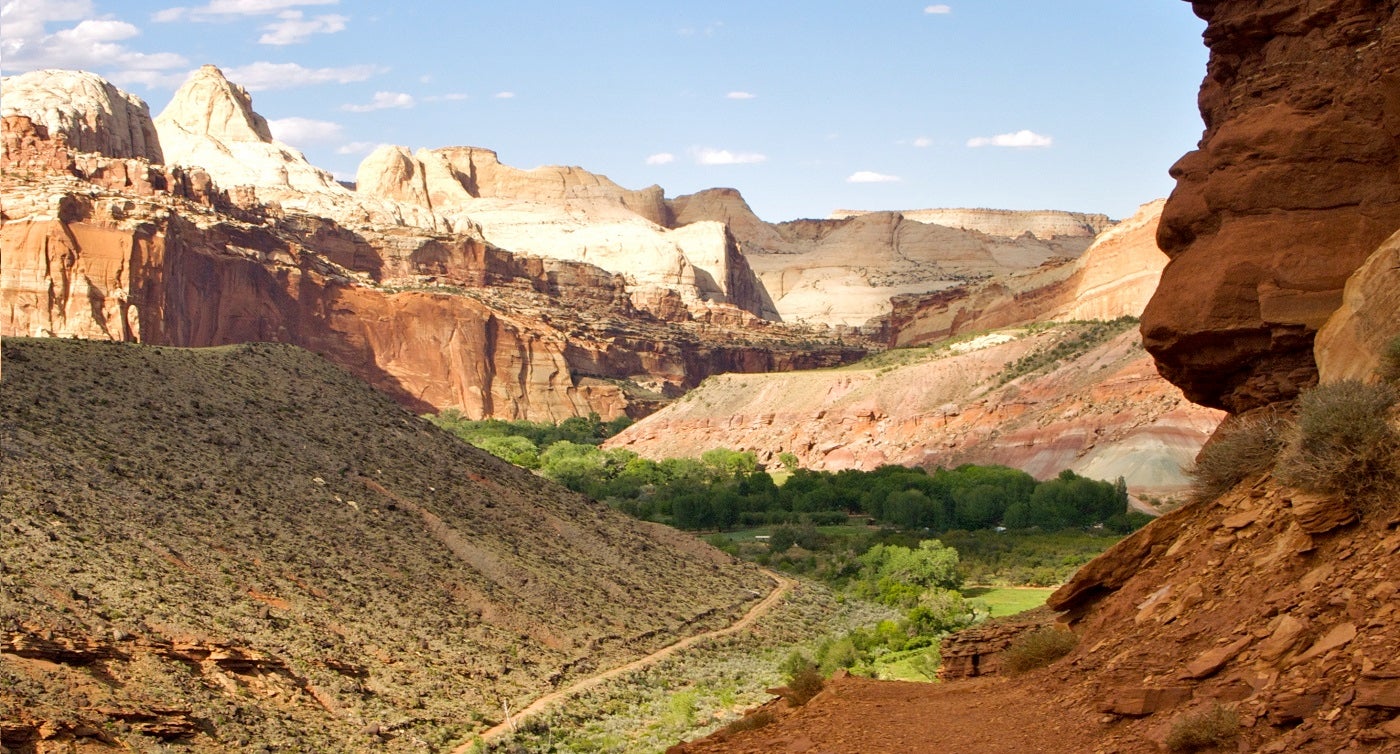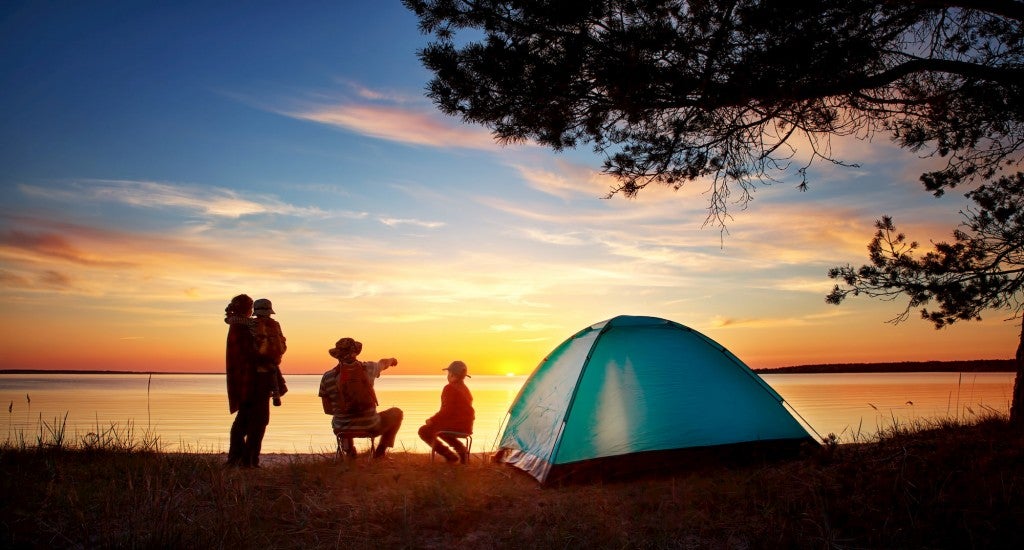Camping in Capitol Reef National Park stands out as a secluded and peaceful experience in the desert of southern Utah. With the other-worldly red-rock cliffs and formations around the southern end of the state, it’s no surprise that Utah’s National Parks host millions of visitors every year from around the world. All through the summer months, places like Arches National Park and Zion National Park see hoards of people (for good reason—it’s stunning there).
But while many flock to the more developed parks, Capitol Reef National Park remains a hidden gem, wild and relatively underdeveloped, exploding with raw desert scenery.
Discover Capitol Reef Camping
Capitol Reef National Park sits along Utah’s Waterpocket Fold—a geological crease in the earth that creates the quintessential red-orange sandstone cliffs and canyons that this area is known for, and that have made the nearby San Rafael Swell a magnet for outdoor enthusiasts. But unlike the other National Parks in southern Utah, Capitol Reef is free of much of the infrastructure and crowds that flood places like Zion and Arches. That’s why Capitol Reef camping delivers a desert solitude unlike any other.
Among the Mars-like landscape, the sun lights orange cliffs and spires and canyons wind their way through the sandstone. Come nightfall, the sky lights up with waves of the Milky Way. As a designated International Dark Sky Park, camping in Capitol Reef is one of the best places in the world to catch a killer starry sky above your tent ceiling.
From cliffs and canyons to lush orchards and rivers, you’ll be immersed in the unique desert landscape of the Waterpocket Fold when you camp in Capitol Reef.
Where to Camp in Capitol Reef
1. Fruita Campground

Image from The Dyrt camper Tim D.
Fruita Campground sits in the heart of Capitol Reef National Park. A surprising sight of lush green grasses and orchards blanket the land below the steep red-orange cliffs, while the Freemont River traces the edges of the campground. For a moment, you just might forget you’re actually in the desert. This is the largest and only developed campground in the park, with tent sites, group sites, and RV hookups. Plus, it’s open year-round, so you can camp among the geological wonders of Capitol Reef in any season. Sites are reservable in the summer, and first-come, first-serve from November to February.
“We enjoyed this campground. Unlike the other Utah National Parks this campground was easier to book and had sites remaining for weeks after they were released…You are sitting in the canyon so the views all around are beautiful. The contrast between the lush green grass and orchards and the red rock is stunning.” —The Dyrt camper Abbie O.
2. Cathedral Valley
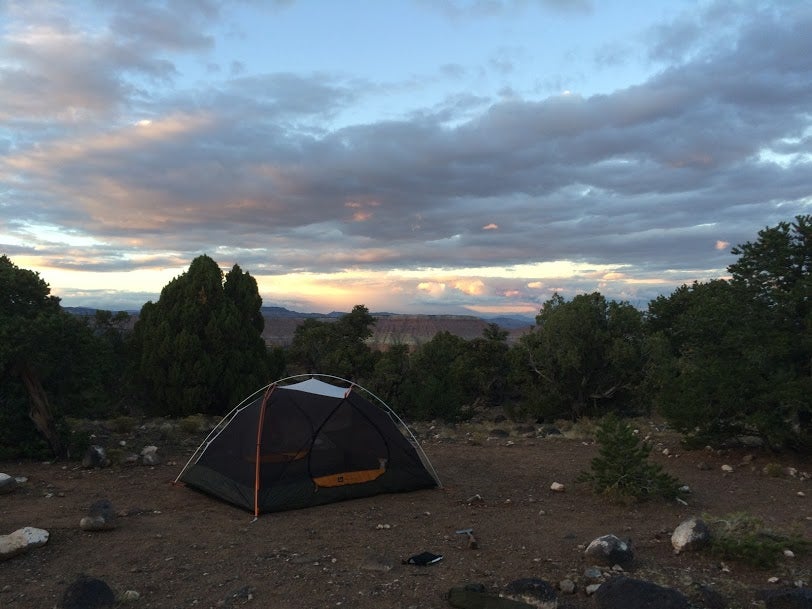
Image from The Dyrt camper Trevin C.
Head to the Cathedral Valley District of Capitol Reef to find secluded camping near wild geological formations, like freestanding red rock spires. Cathedral Valley Campground is a quaint, unassuming campground on the north side of Capitol Reef National Park. With only 6 primitive sites, the campground sits 36 miles down the road from the visitor center, making it a truly secluded and peaceful camping experience. Cathedral Valley Campground is open year-round, and campsites are free and non-reservable.
“Another wonder Utah campground. And Capitol Reef is one of a kind. Getting out here is pretty ridiculous…The camping was epic.” —The Dyrt camper Daniel S.
3. Cedar Mesa
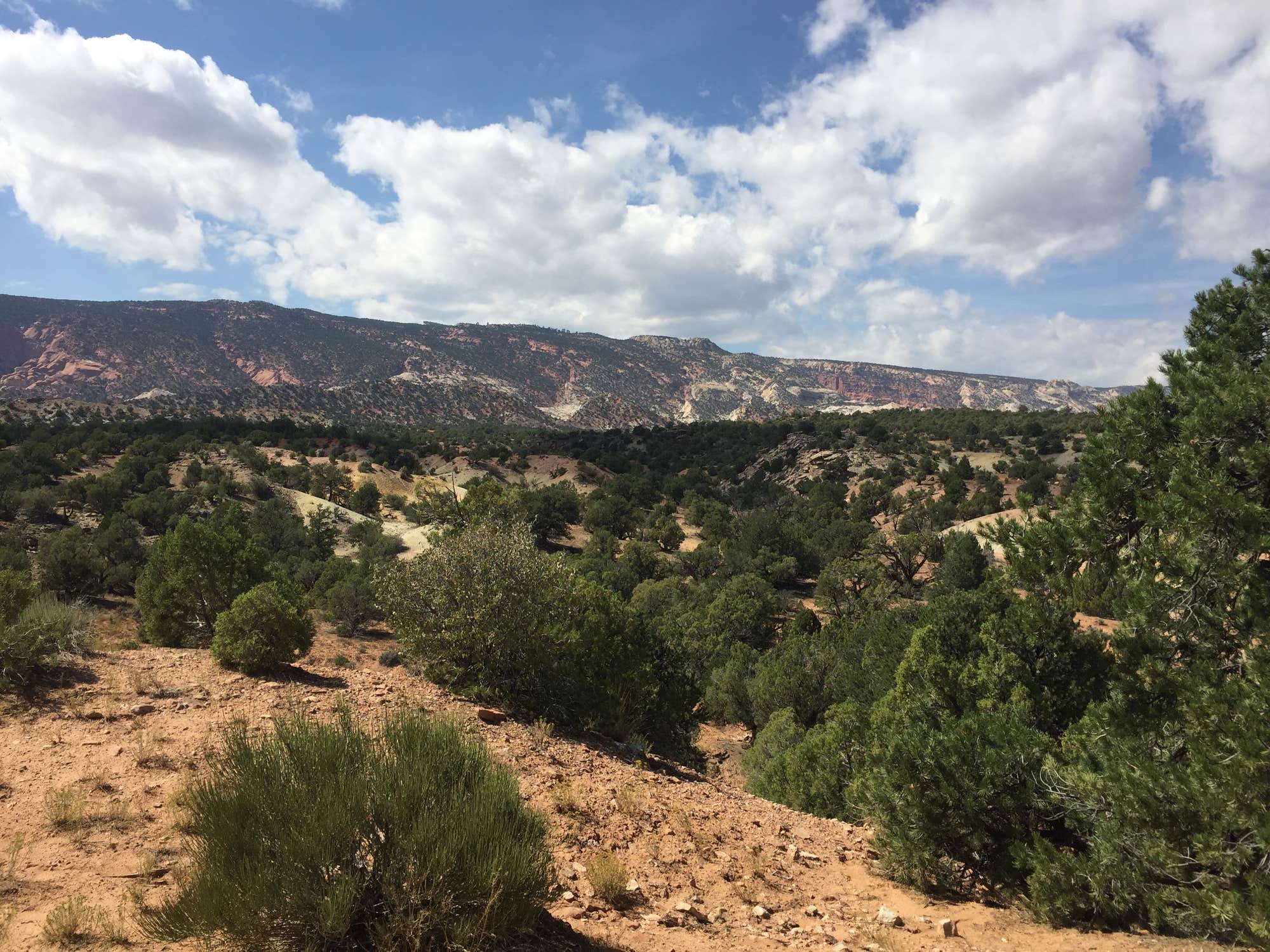
Image from The Dyrt camper Samantha R.
Another small, primitive campground, Cedar Mesa offers a beautiful retreat just 23 miles from the main road through the park. At a lofty 5,500 feet in elevation, you’ll pitch your tent to enjoy quiet, high-desert camping. Catch the Red Canyon Trail from the campground to enjoy classic desert scenery. Cedar Mesa Campground is open year round on a first-come, first-serve basis.
“We drove for about an hour on the Notom-Bullfrog road before finding the primitive campsite. We took the site farthest back on the north side of the road and had a gorgeous view of the sagebrush and red rocks. The night sky was unbelievable!” —The Dyrt camper Samantha R.
4. Sunglow Campground
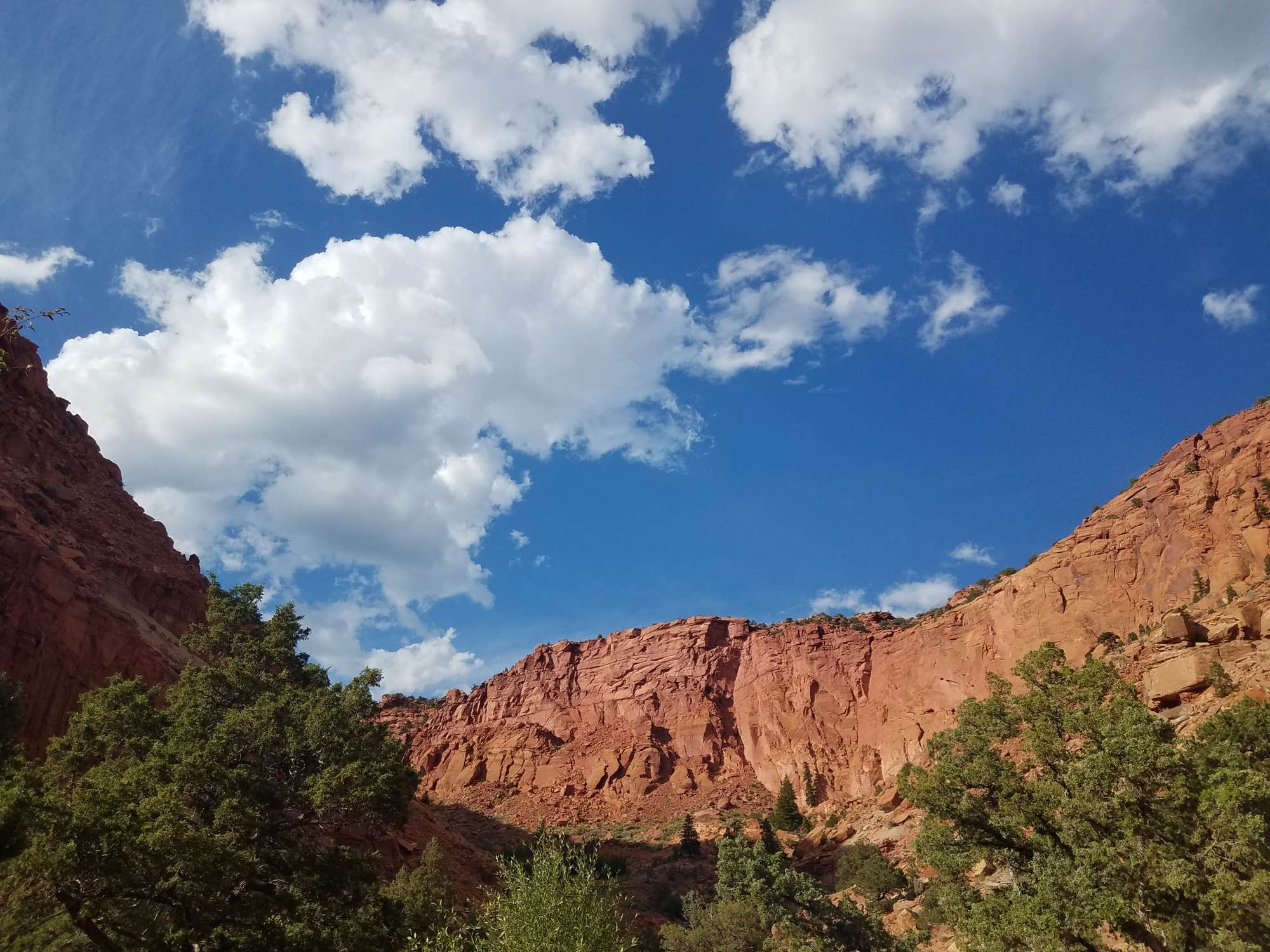
Image from The Dyrt camper Jill L.
Sunglow Campground sits less than a half-hour’s drive from Capitol Reef’s western border. Two spacious group sites make this the perfect place for large families or groups. Capitol Reef National Park is an easy drive and trails outside of the park abound around the campground area.
“We enjoyed camping in one of the two group sites. Our two tent trailers fit nice and there was a lot of space for the kids to run around. Each site has water and the bathrooms were clean with sinks and flush toilets.” —The Dyrt camper Jill L.
Primitive Camping in Capitol Reef
Head off the beaten path to find some of the wildest and most secluded Capitol Reef Camping. Whether you’re driving down a dirt road or packing up a backpack for a multi-day trek, dispersed Capitol Reef camping brings the ultimate adventure.
Capitol Reef National Park Dispersed Camping
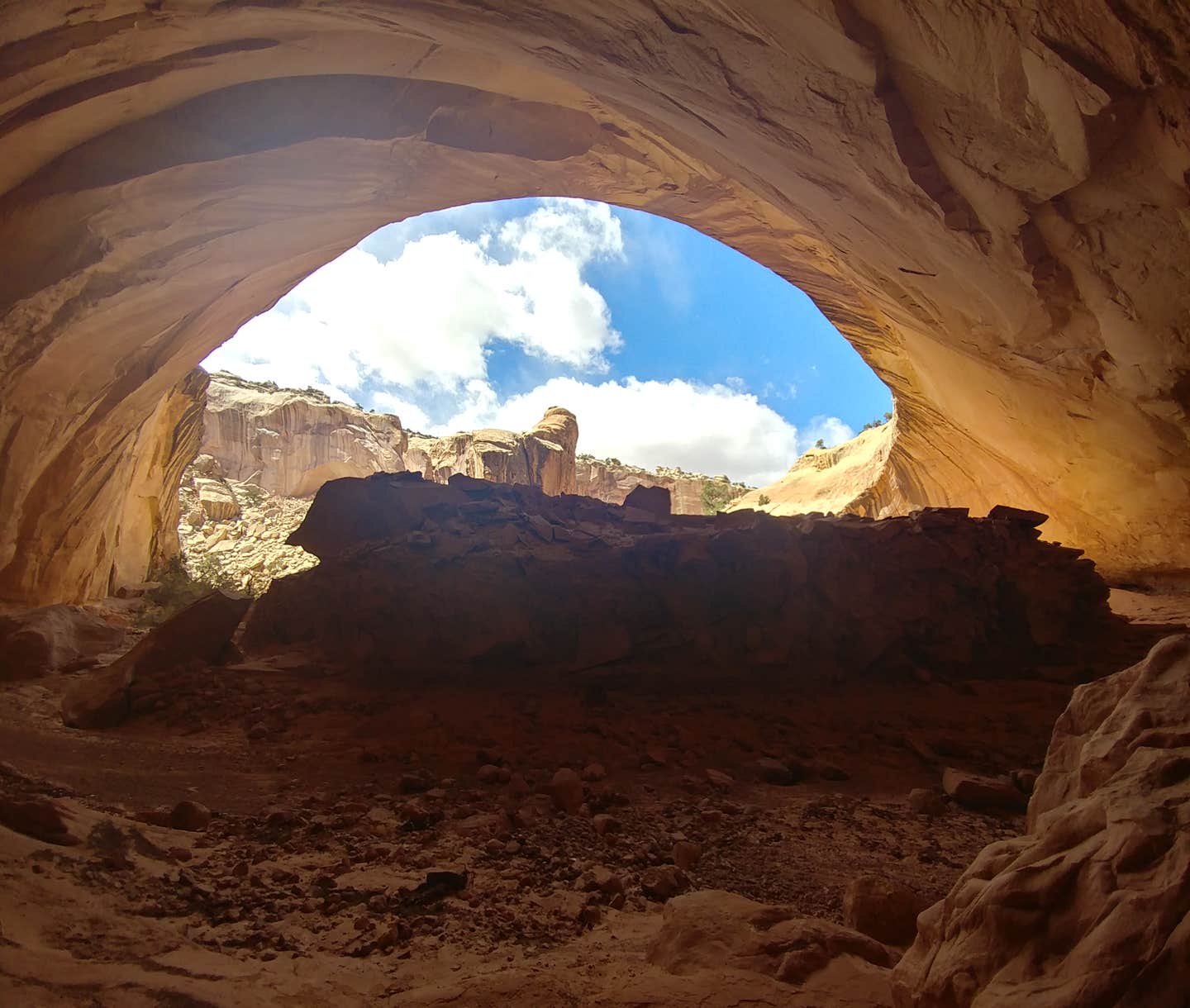
Image from The Dyrt camper Andrew A.
Dispersed, primitive camping is permitted in many areas around the borders of Capitol Reef National Park. Be sure to check with the visitor center or a ranger station regarding permits and the best areas to camp before heading out. You won’t find restrooms or picnic tables at these sights, but you will find complete solitude among the wild desert landscape.
“Wow! I love dispersed camping…especially in Utah. The red cliffs are astounding. It is pretty easy finding a nice place to make home right outside of the park. Most of the roads aren’t paved when you leave the highway to find a spot, but I drive a Corolla and it wasn’t a problem. Camping out here was an amazing experience. The stars at night are incredible!” —The Dyrt camper Kelly R.
Related Campgrounds:
- Strawberry Reservoir Camping, Uinta National Forest, UT
- Grand Escalante Camping, Kanab, UT
- Starvation State Park (is now called: Fred Hayes State Park at Starvation), Duchesne, UT
- Pine Lake Camp, Antimony, UT
- Sand Hollow Camping, Sand Hollow State Park, UT
- Spanish Trail RV Park, Moab, UT
Popular Articles:
Articles on The Dyrt Magazine may contain links to affiliate websites. The Dyrt receives an affiliate commission for any purchases made by using such links at no additional cost to you the consumer.

